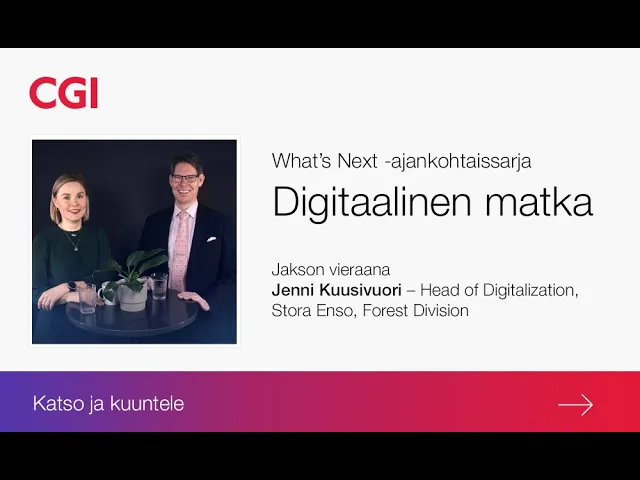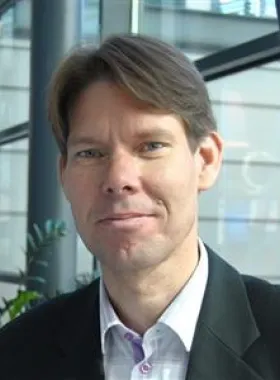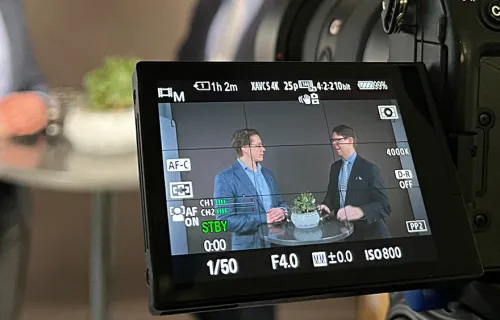Balancing between securing the business operations and driving business transformation
In Finland, there are around 600 000 forest owners. It is thus fair to say that Finland lives from wood. Forests are also one of the cornerstones of Stora Enso's offering of renewable solutions. Cooperation with forest owners is at the heart of the Forest Division's activities, especially in wood procurement in both Finland and Sweden.
"The forestry sector has digitalized much later than the banking or insurance sector for example. The prevailing perception has been that it would be difficult to create digital services for forest owners. That perception has completely changed along the way," Jenni Kuusivuori, Head of Digitalization at Stora Enso Forest Division explains.
Digitalization is seen as increasing the transparency and efficiency of operations. In addition, the sharing of up-to-date information made possible by digitalization engages the parties in closer cooperation.
Developing the wood procurement and forestry service and collecting sustainability data at the heart of digitalization
Stora Enso's wood procurement and forestry services include the timber trading process and the cooperation process between the company and forest owners. The digitalization of the wood procurement and forestry service started with a comprehensive analysis of the current situation, the future situation and customer trails. In addition to the wood procurement and forestry services, digitalization is utilized to collect sustainability data. This means data on how operations affect forests and how forest biodiversity can be improved and supported, and how forest use can be made more efficient without harming the nature.
"As is typical for large projects, we did face unexpected challenges."
"The workload was underestimated, and it was assumed that once the baseline had been thoroughly described, implementation would be easy and straightforward. However, there were many unexpected surprises," says Jenni Kuusivuori.
Legacy structures and systems as a challenge for digital development
As consumers, forest owners are used to using digital services and expect to be served through digital channels. The challenges of digitalization were therefore identified especially in the company's own structures and practices, such as the integration of large legacy systems.
“Services need to work and support the customer journey in a multi-channel way. Front-end development is fast, but legacy ERP systems and the back-end are not adapting at the same pace."
"This heterogeneity challenges us to think about how to get the whole chain on board with the change in an integrated way," Jenni Kuusivuori describes. Another challenge is posed by the previously country-specific wood procurement units with their own systems. It is a challenge to harmonize operations when several country-specific legacy systems need to be consolidated.
"Here, CGI has played an important role as our expert partner in Sweden, with whom we found solutions, built interfaces and solved the problems," says Jenni Kuusivuori.
Plan well, with the course set for action
At Stora Enso Forest Division, the progress and scope of the digital transformation is carefully measured. In particular, the automation of the timber trading process is monitored in terms of how much trade is generated through the automated process, while forest owners are monitored in terms of the number of users and the level of engagement.
Digitalization has brought with it greater transparency and a more effective dialogue between the various parties involved.
Jenni Kuusivuori sees the key to success as focusing on doing things the right way, learning from own actions, and continuously improving own operations. For those who are just planning or starting their digital journey, Jenni advises to start by building an overall picture of the future: you need to know your own business and its priorities, understand the interdependencies between different factors and build a roadmap based on them.
"While careful planning is important, it's equally important not to get stuck in the planning mode, but to be brave enough to decide where to start - and invest there. Transformation requires investments. Management support for both the plan and the investment decisions is critical as well," Jenni Kuusivuori concludes.






